Summer sale discount off 50%! Shop Now
Currency
Exotic Skins Explained: Inside Hermes' Craftsmanship
- Home
- ReplicaX Blog | Style Guides and Insider Secrets
- Exotic Skins Explained: Inside Hermes' Craftsmanship
Exotic Skins Explained: Inside Hermes' Craftsmanship
Sep 17, 2025
By
Sophia Whitmore
0 comment(s)
Introduction: Why Exotic Skins Matter at Hermès
When people think of Hermès, they often picture the silk scarf, the equestrian roots, or the iconic Birkin. But within the inner circles of luxury collectors, the most coveted pieces are not merely leather—they are crafted from exotic skins. Crocodile, alligator, ostrich, and lizard have become part of Hermès’ design DNA, commanding astonishing prices and waiting lists that stretch years.
To understand why these bags carry such mystique, one has to look beyond the luxury label. Exotic skins are rare and notoriously difficult to work with. They demand a kind of craftsmanship where perfection is the only acceptable outcome. Unlike calfskin, where minor mistakes may be corrected, exotic skins leave no room for error. That is why Hermès artisans train for years before they are even allowed to handle them.
This article unpacks the artistry and complexity behind Hermès exotic skins, exploring their origins, the differences between crocodile and alligator, the technical challenges they present, and the cultural weight they carry as ultimate status symbols.
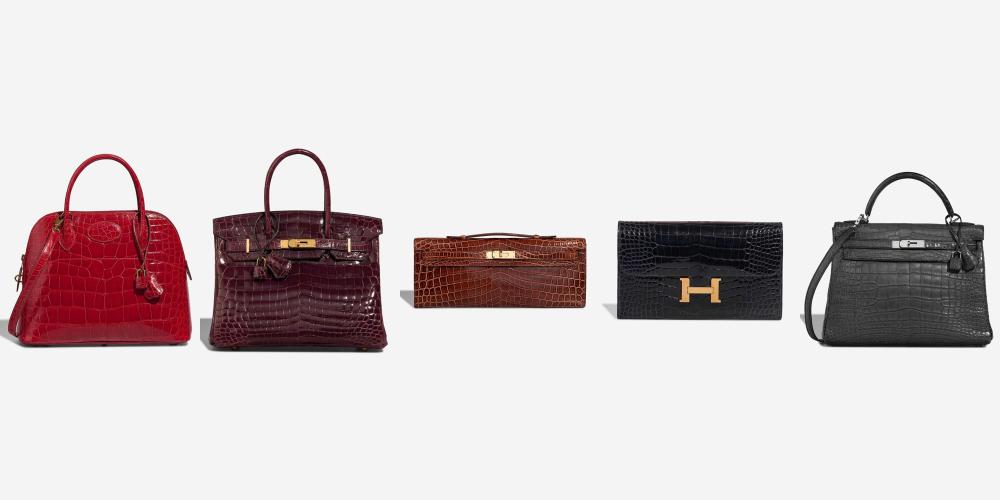
The Origins of Exotic Skins at Hermès
Hermès began in 1837 as a harness workshop in Paris, producing fine bridles and saddles for European nobility. Over time, it expanded into handbags, silk, and fashion. But exotic skins only became central to the house’s identity in the mid-20th century, when luxury consumers began seeking rarer, more distinctive materials than standard calf or box leather.
By the 1960s, Hermès had established itself as a premier name for crocodile and alligator bags, carefully distinguishing its work from other luxury houses by its exceptional finishing. While many brands experimented with exotic skins, Hermès elevated them into an art form, using only the top percentage of available hides and dedicating entire teams of artisans to their transformation.
For more on Hermès' craftsmanship heritage, see our blog on Hermès masters a centuries-old craft.
The Language of Exotic Skins at Hermès
Crocodile vs. Alligator: Knowing the Difference
Hermès relies on two major categories of crocodilian skins—crocodile and alligator. To a casual eye, they may appear interchangeable, but for collectors, each carries distinct prestige and appeal:
- Crocodile Niloticus: Native to the Nile River region, this skin features large, bold scales. It is favored for rich, dramatic colors like fuchsia and emerald.
- Crocodile Porosus: Considered the crown jewel of exotic skins, Porosus comes from Southeast Asia and Australia. Its scales are small, uniform, and refined, giving bags an unparalleled polish. Because of its rarity, it commands the highest prices.
- Alligator Mississippiensis: From the United States, especially Louisiana and Florida, alligator skin is slightly softer with a more matte appearance. It tends to be more understated than Porosus but no less refined.
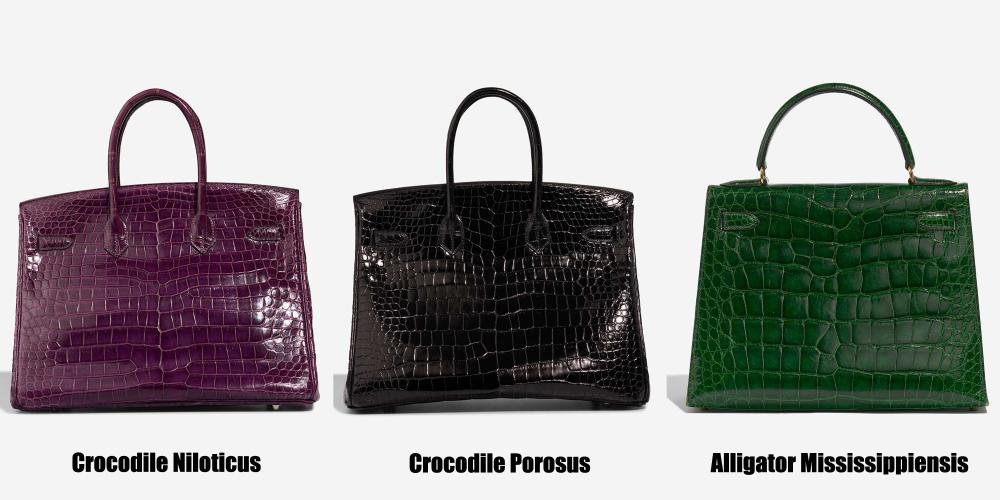
The Signature Gloss: Matte vs. Shiny Finishes
Each skin can be treated in two finishes:
- Matte finish: Velvety and subtle, matte exotic bags age gracefully, developing a patina that reflects their owner’s use over time.
- Shiny finish: Achieved by hand-polishing each scale with an agate stone, shiny exotic bags shimmer like glass. They are striking, but every scratch and natural marking is visible—making them both glamorous and fragile.
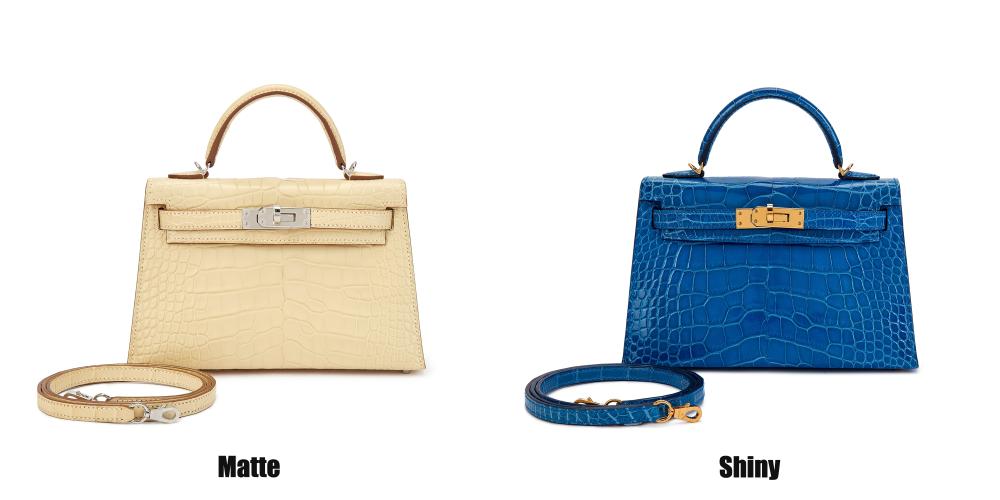
Quick Comparison: Hermès Exotic Skins and Finishes
|
Skin Type |
Origin |
Scale Pattern |
Prestige Level |
Common Use |
Finish Options |
Collector Notes |
|
Crocodile Niloticus |
Nile River (Africa) |
Large, defined |
High |
Birkins, Kellys |
Matte, Shiny |
Vibrant colors; strong statement |
|
Crocodile Porosus |
Australia, Southeast Asia |
Small, symmetrical |
Highest |
Flagship bags |
Matte, Shiny |
The rarest and most prestigious |
|
Alligator Mississippiensis |
United States (Mississippi basin) |
Smooth, subtle |
Medium-High |
Bags, wallets |
Matte, Shiny |
Understated elegance; softer finish |
|
Matte Finish |
Applied to all exotics |
Soft, velvety |
Timeless |
All bag types |
Matte only |
Ages beautifully with patina |
|
Shiny Finish |
Hand-polished with agate stones |
Glossy, reflective |
Striking |
High-profile bags |
Shiny only |
Unforgiving but dazzling |
Why Exotic Skins Are So Difficult to Work With
Scarcity and Imperfections in the Hide
Unlike calfskin, which is abundant and relatively uniform, exotic skins are scarce. Even when sourced, they often carry imperfections—scars, insect bites, irregular scale shapes—that drastically reduce usable surface area. On average, only 10–15% of a crocodile hide is deemed flawless enough for Hermès standards.
Fragility During Cutting
The cutting stage is a trial of precision. Each section of the hide varies in thickness and hardness. A blade angled incorrectly can split a scale, rendering an expensive hide worthless. Hermès artisans often cut under magnification, ensuring each incision respects the natural alignment of the scales.
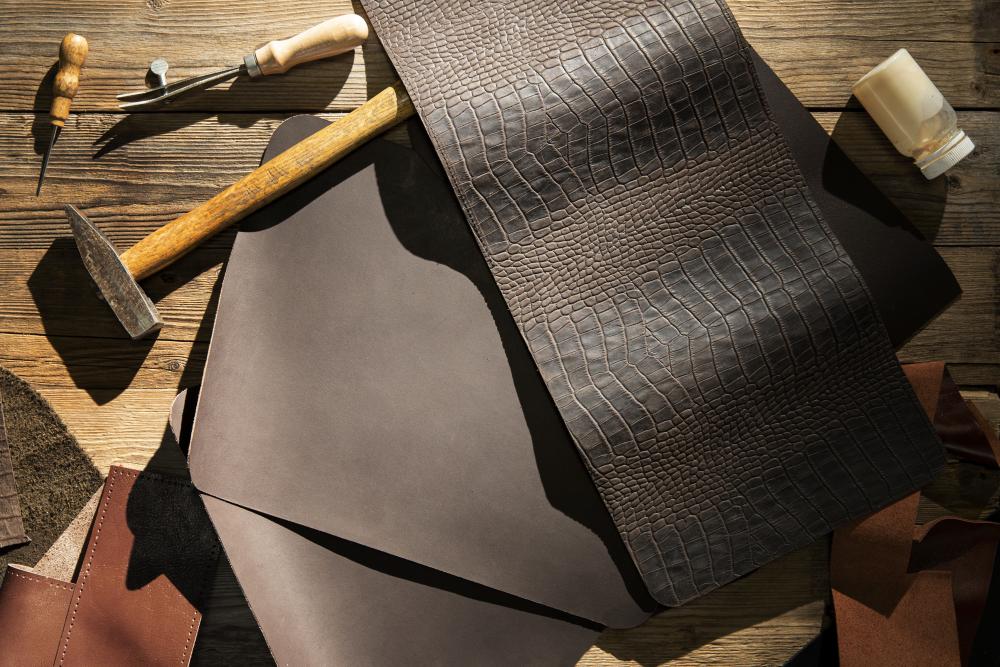
Stitching Challenges
The famed saddle stitch, done entirely by hand with two needles, becomes even more treacherous on exotic hides. Piercing through scales without cracking them requires special awls and sharpened needles. Tension must be perfectly even—too tight, and the scales split; too loose, and the seams gape.
Dyeing and Color Absorption
Achieving Hermès’ signature jewel tones is perhaps the most complex stage. Exotic hides absorb dye unevenly, so artisans must apply layer after layer, often over several days, to ensure color uniformity. Shades like “Rose Scheherazade” or “Vert Émeraude” are notoriously difficult to master.
The Artisans Behind Hermès Exotic Skins
Years of Training Before Touching Exotic Hides
New Hermès artisans do not begin with exotic skins. Instead, they spend five or more years mastering simpler leathers. Only after passing rigorous tests are they allowed to work on crocodile or alligator. By that point, they have already proven precision, patience, and consistency.
One Artisan, One Bag
Every Hermès bag is made start to finish by one artisan. This rule is sacred for exotic bags. A single pair of hands controls the process—cutting, stitching, dyeing, polishing—ensuring harmony and avoiding inconsistencies. Each bag carries the subtle fingerprint of the artisan who crafted it.
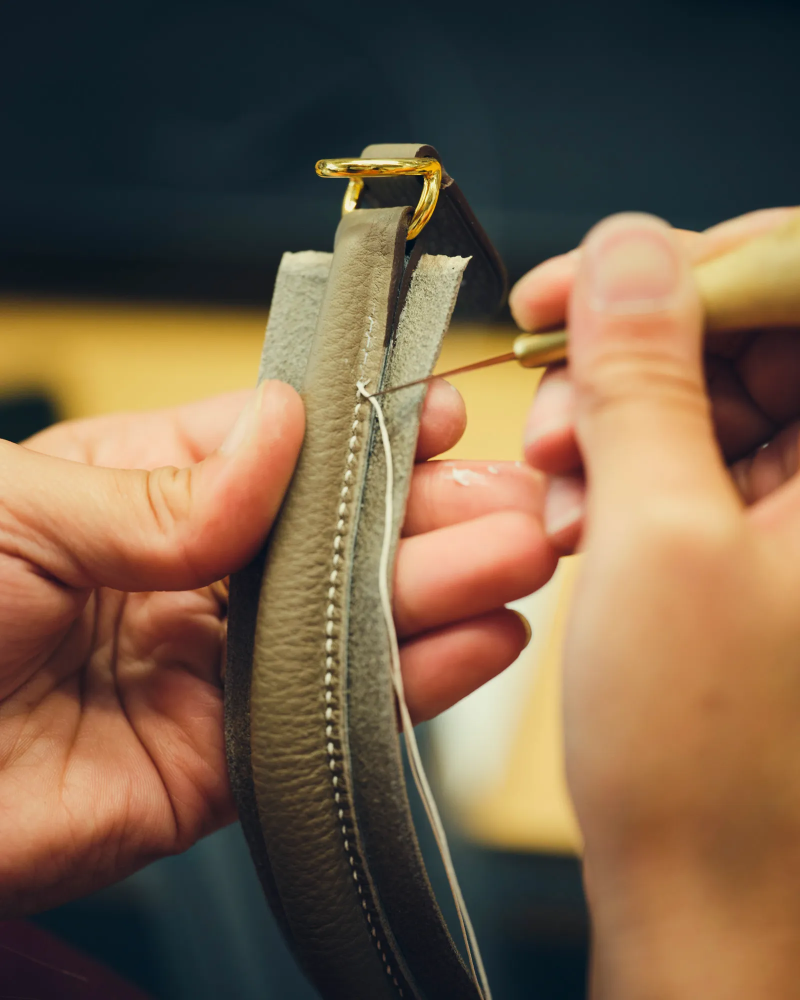
Iconic Hermès Exotic Skin Creations
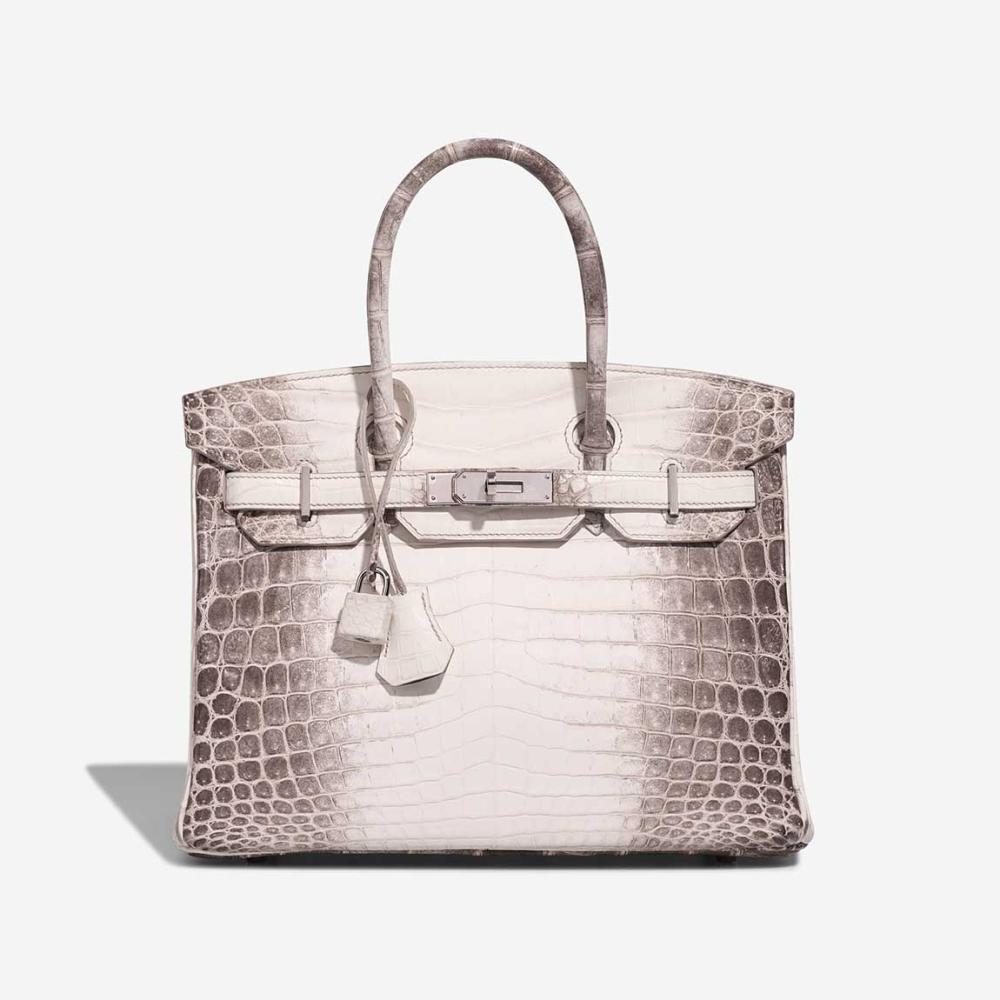
The Crocodile Birkin
The Birkin in Porosus Crocodile is perhaps the most iconic exotic bag in existence. Some versions, particularly the Himalaya Birkin—dyed in gradient tones of smoky gray fading to pearly white—are considered the “Holy Grail” of handbags. Auction houses like Christie’s and Sotheby’s have sold Himalaya Birkins for over $300,000.
The Alligator Kelly
The Kelly in matte alligator offers a quieter form of luxury. Favored by collectors who want refinement without excessive flash, it represents the perfect marriage of Hermès structure with a softer, natural skin.
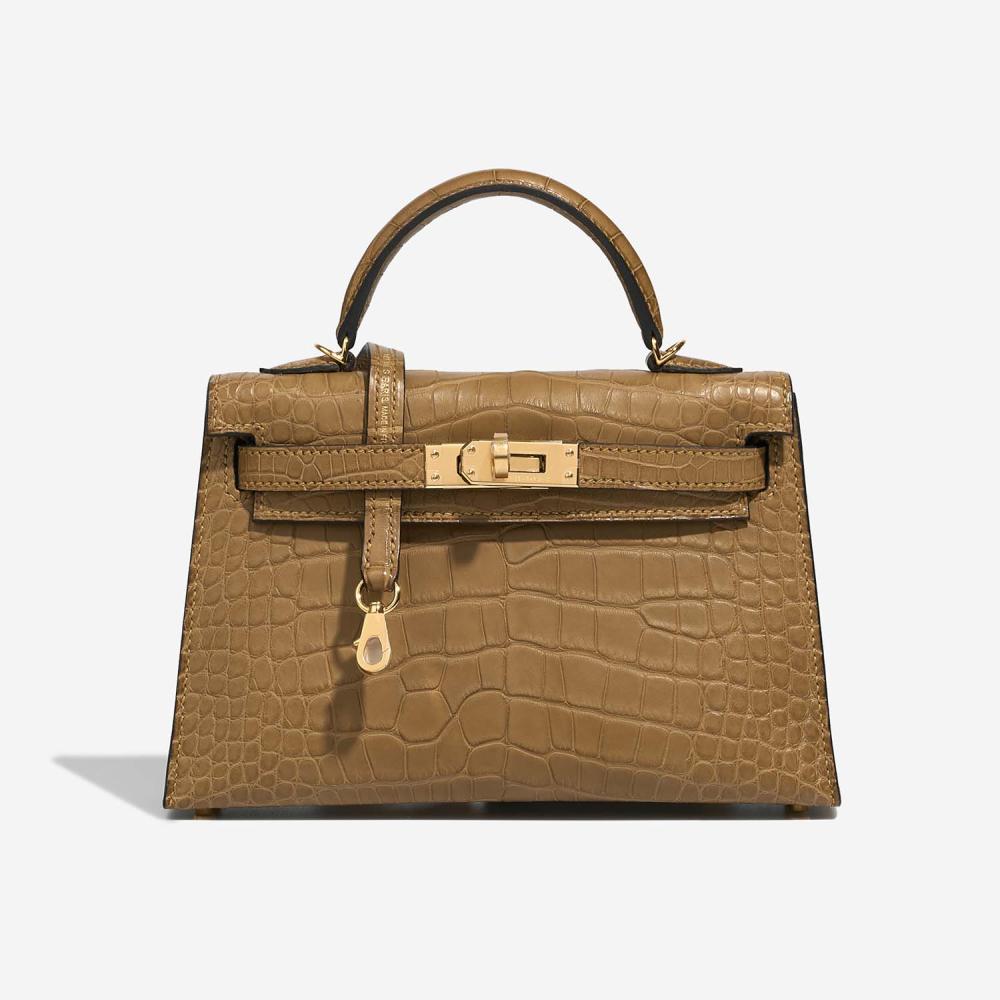
Smaller Leather Goods
Exotic skins are not limited to bags. Hermès also applies them to wallets, belts, and clutches. Because these are smaller items, they often require even greater precision—every seam is closer to the eye, leaving no room for error.
Care and Maintenance of Exotic Hermès Bags
Environmental Sensitivity
Exotic skins are highly responsive to humidity and temperature. Too much moisture causes lifting of the scales, while extreme dryness leads to cracking. Owners often keep humidity-controlled cabinets just for their collections.
Professional Care
While calfskin bags may be cleaned at home, exotic Hermès bags demand expert care. Conditioning, polishing, or stain removal should only be done by Hermès workshops or specialized luxury conservators.
Storage Protocols
Proper storage is as important as proper use. Exotic bags should be kept in breathable cotton dust bags, never in plastic. Acid-free tissue paper is used to support their shape, and they must be rotated in and out of storage to maintain the skin’s suppleness.
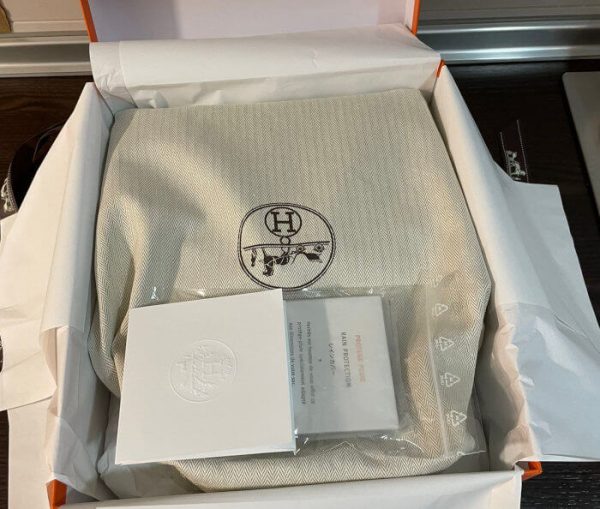
The Economics of Exotic Skins
Why Prices Soar
Exotic Hermès bags can cost five to ten times more than their calfskin counterparts. Contributing factors include:
- Limited skin availability: Only a handful of flawless hides meet Hermès’ standards.
- Labor intensity: Exotic bags take longer and involve more risk for artisans.
- Training investment: Artisans spend years before being trusted with exotics.
- Collector demand: Auctions have established sky-high valuations.
Auction Records
The 2017 Himalaya Birkin with diamond hardware sold for $379,261 at Christie’s Hong Kong, setting a world record. These results ripple through the market, cementing Hermès exotics as alternative assets akin to fine art or rare watches.
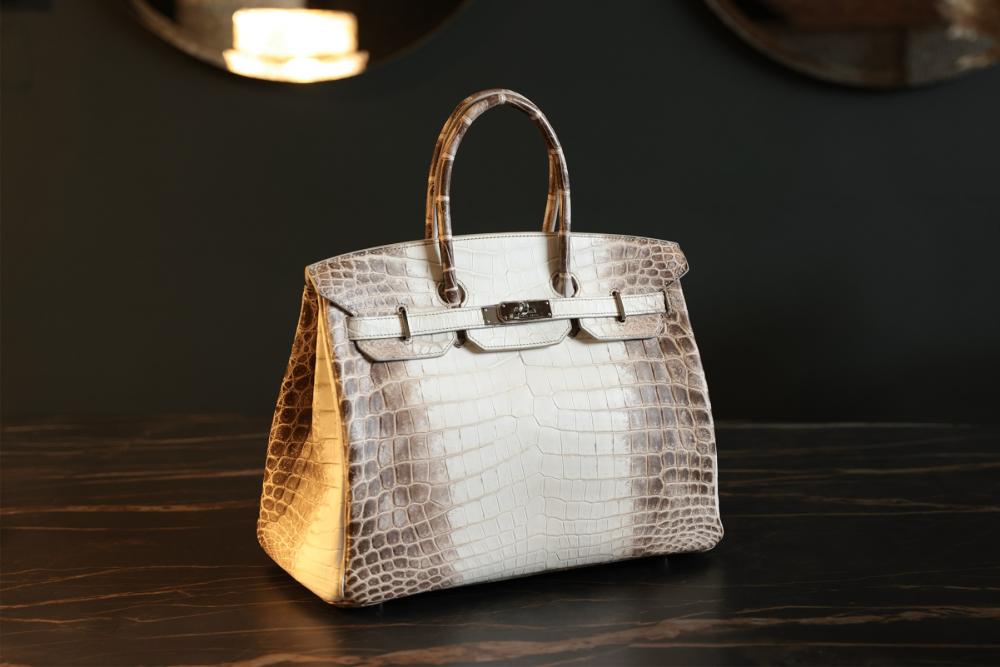
Ethical Considerations and Sustainability
Hermès’ Farming Partnerships
Hermès has long faced scrutiny for its use of exotic skins. In response, it has invested in crocodile farms and partnerships, ensuring animals are raised under controlled, regulated environments. The goal: ethical sourcing that aligns with both conservation and animal welfare standards.
Innovation: Toward the Future
While Hermès continues to champion exotic skins, it has also explored sustainable alternatives. In 2021, it unveiled Sylvania, a mushroom-based “leather” developed with biotech firm MycoWorks. Though not intended to replace crocodile, it signals Hermès’ willingness to innovate responsibly.

Why Collectors Obsess Over Hermès Exotic Skins
For collectors, exotic Hermès bags are more than accessories—they are cultural artifacts, financial investments, and status symbols. Owning one signifies entry into a rarefied world where scarcity, artistry, and prestige converge.
To carry a Hermès crocodile Birkin is to carry weeks of painstaking labor, decades of artisan expertise, and a piece of natural rarity transformed into art. That is why they inspire such passion—and why demand only continues to grow.
For more insights into Hermès' design and production, see our blog on From Sketch to Reality: Inside the Hermes Design Process.
Conclusion: The Pinnacle of Craftsmanship
Hermès exotic skins are not simply about luxury. They are about testing the limits of human skill. Crocodile and alligator hides resist mistakes, demand precision, and reward patience with breathtaking results.
In every Hermès exotic skin bag, there is a meeting of nature’s complexity and human mastery. That fusion—the rare hide, the artisan’s hand, the flawless finish—is what makes these bags not just accessories, but works of art that endure across generations.
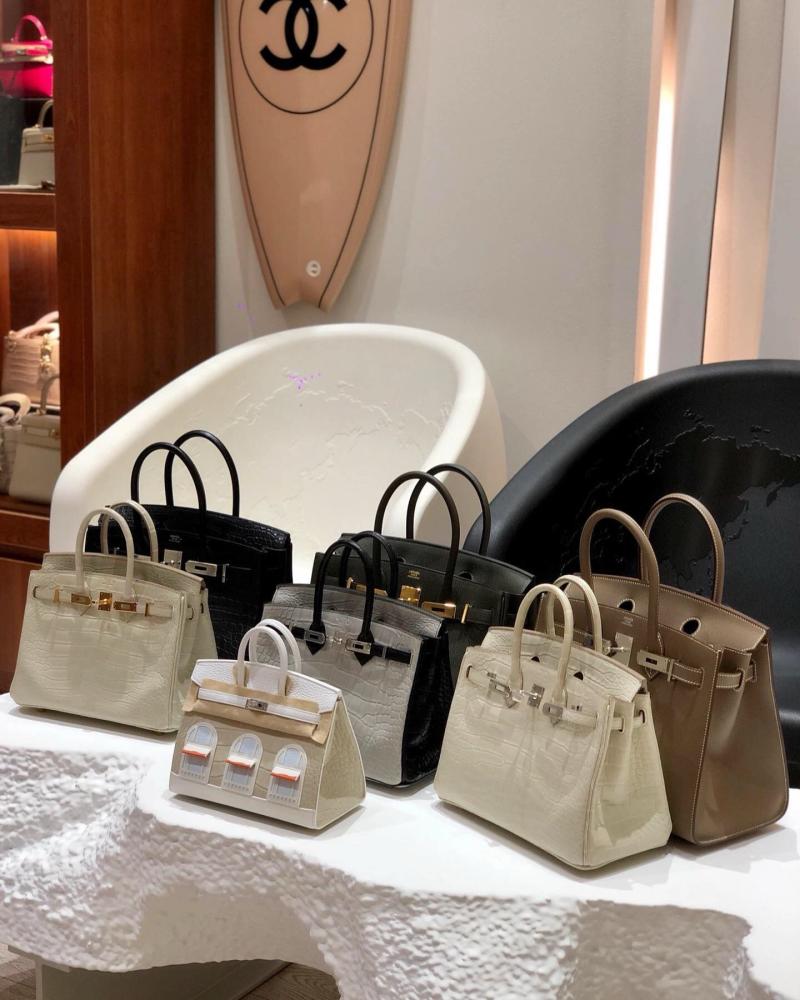
Recent Posts